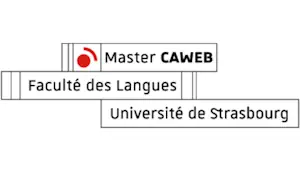Defining Localization: An Introduction by Dr. Naoto Nishio
You must have heard of “translation” before. However, the term “localization” could still be a mystery to you. In order for the students to better get a grasp of the idea behind localization, CAWEB students specializing in Japanese were offered the opportunity to attend an exclusive course on localization presented in Japanese by Dr. Naoto Nishio in October 2017.

Who is Dr. Naoto Nishio?
Nowadays, localization is still a very under-studied field and only a few universities offer complete degrees in localization. Dr. Naoto Nishio had the opportunity to pursue such a degree at Limerick University, Ireland. There, he graduated with a MSc in Multilingual Computing and Localization.
He then went on to pursue a PhD. Then, in 2015, he published a thesis entitled “Opera Goer or Scrabble Player: What Makes a Good Translator?”. This work deals with the relationship between the interests and characteristics of translators and the translations they produce.
Since then, Dr. Nishio has worked to support the cross-cultural communication in large companies, alongside the implementation of localization projects. He is also promoting localization training in Japan, to help Japanese corporations open themselves up to international markets.
Thanks to his professional experience and knowledge of localization, Dr. Nishio was the perfect person to introduce us to this field, which is so closely related to the web. That is how we learnt the definition, principles and features of localization.
Step One: Which Definition of Localization?
The first thing to know about localization is that there are many different definitions for the term, and each definition brings its own nuances. Dr. Nishio started by giving the definition used by GALA, the Globalization and Localization Association:
“Localization is the process of adapting a product or content to a specific locale or market”.
He then added that some definitions are intended to be more precise, since localization is often associated with the adaptation of digital products – especially when it comes to marketing – and is made up of linguistic and cultural norms.
So what is it exactly? Because this field of study is still relatively new, its definition seems bound to change every now and then.
What we know for sure is that localization accounts for the linguistic and cultural requirements of a country or region, as it can sometimes involve several regions in the same country, as well as market a specific product or service is aimed at. A localization professional won’t just translate a text, but will also adapt everything according to the codes, customs, norms and consumption habits of the target market. His goal? Make it seem like the product was created locally, specifically for the consumers it is aimed at.
Step 2: What do we localize?
It is logical to think that technical and marketing content such as software, websites, user manuals, brochures, and other elements related to the international development of a company, are typically localized. Some even think that video games, movies, TV programs , and even books, should be adapted as well.
Let us have a look at two examples given by Dr. Nishio during his presentation:
Localization of a website:
 With this first example, Dr. Nishio wanted us to compare two different interfaces from the website of one of the most famous fast food restaurant chains: McDonald’s. The first is in English, and is aimed at the United-States, while the second is in Spanish, and is intended for Latin American countries.
With this first example, Dr. Nishio wanted us to compare two different interfaces from the website of one of the most famous fast food restaurant chains: McDonald’s. The first is in English, and is aimed at the United-States, while the second is in Spanish, and is intended for Latin American countries.
In this case, the localization of the Latin American interface can be observed from various perspectives.
The first goal was to modify the English terms, unique to the United-States, to adapt them for the local customers. That is how the “McCafé Coffee” became a “Coffee (Medium)”, as the word café isn’t commonly used in Latin America.
The second goal was to adapt the Spanish version to the terms and expressions unique to Latin America, as they can sometimes differ significantly from those used in Spain. That is how “fries” became “papitas”, whereas fries would be called “patatas fritas” in Spain.
Similarly, it would seem strange if certain words were not calqued from the English version, such as “Diet Coke” and “Hash Browns”. Was the localizer being lazy here? Not at all! They actually did their job well. In Spain, and in many other countries, it might have been necessary to translate these words for the customer to understand what he/she was about to order.
In Latin America however, the anglicization of local language and culture enables customers to understand what a Diet Coke and Hash Browns are, without any translation.
Localization of a cartoon:
The next example introduced by Dr. Nishio is the localization of a Japanese cartoon for an American audience. The adaptation does not just relate to the dialogues, so American children can identify the characters and relate with the world of the cartoon.
The cartoon must also be adapted to the children’s culture. That is how Japanese yens became dollars, chopsticks become forks, and a letter F is added to a main character’s exam paper, in accordance with the American notation system. As for the first picture, we assume that it might have something to do with the unconditional love Americans have for pizza.
Conclusion
As you might have guessed, Dr. Nishio’s main goal during the presentation was to make us understand that localization does not only involve translation, but also accounts for many cultural, technical and linguistic factors. Here are a few examples:
- Norms and laws
- Nuances
- Registers
- Color associations, symbols, and icons
- Humor
- Cultural and religious values
- Special characters
- Date formats, measuring units and currencies
By accounting for all these factors in a localization project, a company will be able to optimize its entry into international markets, and actively participate in the collective globalization enterprise. Companies that choose to localize often gain the upper hand.
No doubt localization has some wonderful days ahead. If you are interested in learning more about localization, have a look at the TCLoc Master’s program. TCLoc is a distance learning master’s degree dedicated to localization, and is taught at the University of Strasbourg.
Lastly, we would like to thank Dr. Naoto Nishio for sharing his knowledge and experience with us.
Sources
https://a4traduction.com/glossaire-de-la-traduction/Localisation
https://www.technitrad.com/fr/qu-est-ce-que-la-localisation/
https://www.gala-global.org/industry/intro-language-industry/what-localization
https://www.sites.univ-rennes2.fr/lea/cfttr/veille/?p=2338
http://translation-blog.multilizer.com/what-is-localization/
http://content.lionbridge.com/the-difference-between-translation-and-localization-for-multilingual-website-projects-definitions/
http://searchcio.techtarget.com/definition/localization
https://fr.wikipedia.org/wiki/Localisation_linguistique
Article written by a CAWEB Master’s student.





